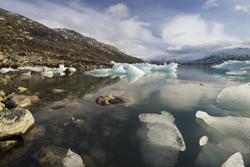Reconstructing the climate of the Holocene
The PACLIVA project tested patterns of climate variability at the decadal to century scale. Models which test and validate climate behaviour over time form the basis of climate prediction. This study identified the degree to which the oceanic anomaly patterns associated with the North Atlantic Oscillation reflect the long-term variability of North Atlantic climates. The scientists focused on precipitation reconstructions, because winter precipitation is a good indicator of past atmospheric variations. They based the study on the region of Scandinavia and analysed records of climate variation at Norwegian glaciers. The scientists calculated indices for a continuous time series of non-stationarity over the last six thousand years. They found evidence indicating that the atmosphere varied spatially and that circulation patterns varied on millennial time scales. The study also involved sediment samples collected from catchments of the St. Sorlin glacier at Lac Blanc in the south-eastern French Alps. The data compiled showed evidence of a climatic optimum, when little or no clastic glacier flour was deposited in the lake.





